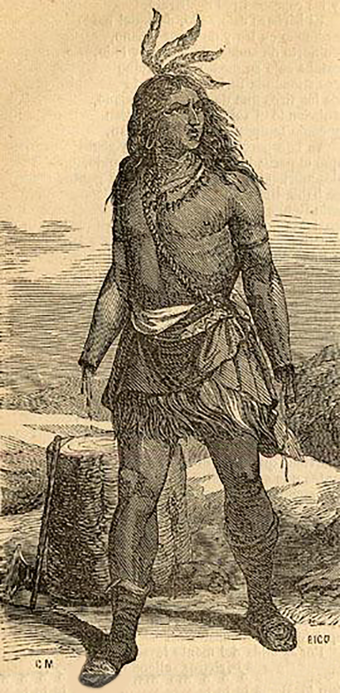Galvarino – The No-Handed Mapuche Warrior
 In November of 1557, the Mapuche warrior, Galvarino, led a division of his fellow soldiers in a desperate battle against Spanish colonial forces in the Araucania in central Chile. Remarkably, since he no longer had hands, Galvarino rushed headlong into the fray armed only with his teeth and a knife strapped to each wrist.
In November of 1557, the Mapuche warrior, Galvarino, led a division of his fellow soldiers in a desperate battle against Spanish colonial forces in the Araucania in central Chile. Remarkably, since he no longer had hands, Galvarino rushed headlong into the fray armed only with his teeth and a knife strapped to each wrist.
The Spanish campaign to conquer Chile began in the 16th century, and the conquistadors first met the Mapuche in serious battle at Reynoguelen in 1536. Over the next several decades, the opposing armies fought what is known as the Arauco War, with most battles occurring in the Araucania, between the Tolten and Itata rivers.
On November 8, 1557, at the Battle of Lagunillas, Galvarino together with 150 others was captured and taken prisoner by the Spaniards. Convicted of insurrection, some of these prisoners had their noses or right hands amputated, while others, including Galvarino, had both hands removed.
The Spanish governor, Garcia Hurtado de Mendoza, had Galvarino returned to his people to send a message that Mendoza and the Spanish were to be feared, with the hope that this would result in the Mapuche simply surrendering without further bloodshed. This plan backfired. Galvarino implored the Mapuche war council to continue the fight and stirred up his people even more against the Spanish.
Rewarded for his bravery, Galvarino was placed in command of a squadron of men, and in order to fight effectively, knives were fastened to the stubs of his wrists.
The two sides met again at the Battle of Millarapue on November 30, 1557. Fierce fighting continued from dawn until dusk, with Galvarino at the forefront, urging his fellow soldiers on, reportedly yelling: “see that you all fight very well, you do not want to be as I am without hands, so that you will not be able to work nor to eat!” (Jerónimo de Vivar, Crónica, Capítulo CXXXIII.)
Overmatched, the Mapuche eventually succumbed in the battle, and when the smoke cleared, reportedly about 3,000 Mapuche had been killed, and another 800 captured, including Galvarino. Although most of the captured Mapuche leaders were hanged, there is some debate on whether Galvarino was thrown to the dogs instead.
If you liked this article, you might also enjoy our new popular podcast, The BrainFood Show (iTunes, Spotify, Google Play Music, Feed), as well as:
- The Fascinating Origin of the Phrase “Run Amok”
- A Japanese Soldier Who Continued Fighting WWII 29 Years After the Japanese Surrendered, Because He Didn’t Know
- The Modern King Leonidas: Athanasios Diakos
- The Man Who Held Off Six Enemy Tanks and Several Waves of Infantry for an Hour By Firing on Them While Standing Atop a Burning Tank
- The Curious Case of Alien Hand Syndrome
Bonus Fact:
- While the main, organized fighting of the Arauco War ended with the 16th century, pillaging and sporadic battles continued for the next few hundred years. Despite the Spanish’ sincerest efforts during the Arauco War, the Machupe remained independent, and were so until the Occupation of Araucania in the 1860s.
| Share the Knowledge! |
|





Yikes! Poor guy.
Too bad he didn’t see the silver lining when he was allowed to live and see another day, rather than interpret that his life was spared to fight another day. War is not the answer. There has to be a better way.